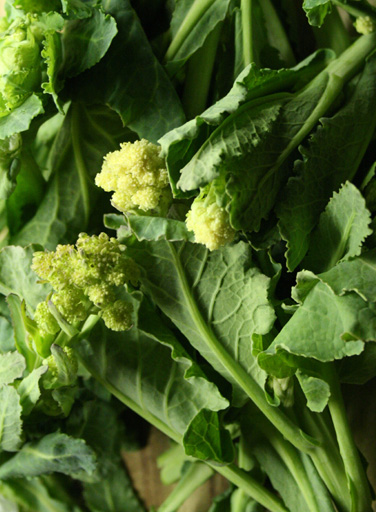
March 18, 2011
This week everyone will be getting:
potatoes (Benbole Farm, St Kew)
* leeks (Jeremy Brown, St Kew Harvest)
onions (Restharrow Farm, Trebetherick)
white sprouting broccoli (Restharrow Farm)
cauliflower (Restharrow Farm)
kale (Restharrow Farm)
lettuce (Growfair, Cornwall)
Standard boxes will have extra potatoes and onions plus:
* jerusalem artichokes (Jeremy)
swede (Growfair)
savoy cabbage (Growfair)
* = grown to organic principles

March 16, 2011
We’ve marked Fairtrade Fortnight with the launch of our new carbon-zero standard-size veg hampers. This follows a lengthy search for sustainable veg box containers.
After a successful trial, we’re now offering these biodegradable jute hampers to our members. We’ve purchased them from GoJute, a local firm based in St Austell, which operates to strict ethics.
Our new membership secretary Cath Simmons says:
These hampers will replace the assortment of boxes that are used at the moment. They’ll make the picking and packing sessions a lot more efficient as well as being very practical and good-looking. They’re lined and have sturdy bamboo handles.
As soon as we receive your order, your next weekly veg share will arrive in your new hamper.

The bags are available to standard box customers for the cost price of £5.95 each, or two for £11.90. It’s a returnable deposit, provided the hampers are handed back to us in good condition.
Members will be able to leave an empty bag in the packing shed for when they pick up their veg the following week.
Small vegetable box customers will get this offer at a later date. Regrettably, our consignment of small jute hampers is stuck on the high seas after a maritime collision (you couldn’t make it up!) on the voyage from India.
We’ll keep you posted.
Jute suits – bags replace veg boxes – Cornish Guardian

March 14, 2011
We’ve lots of activity to report from our community veg plot at St Kew Highway in north Cornwall.
- BBC Inside Out South West has been to film us about initiatives to keep rural communities alive.
- We’ve begun digging up the ground inside the newly-covered polytunnel so we can sow early carrots,
French beans, beetroot and salad crops. Cold frames are also under construction. - We’ve planted two rows of Jerusalem artichokes, sown additional salad leaves in modules and pricked
out the parsley seedlings. - We’re continuing our onslaught on the dock weeds in the brassica beds.
Not bad for a mixed bunch of volunteers! Thanks to Bob, Bridget, Charlotte, Gav, Jane, Kitty, Mark M, Mark N, Mike S, Sophie. Also veg box packers Anne, Jenny, Penny, Robert, Trish, and Max (aged 5).

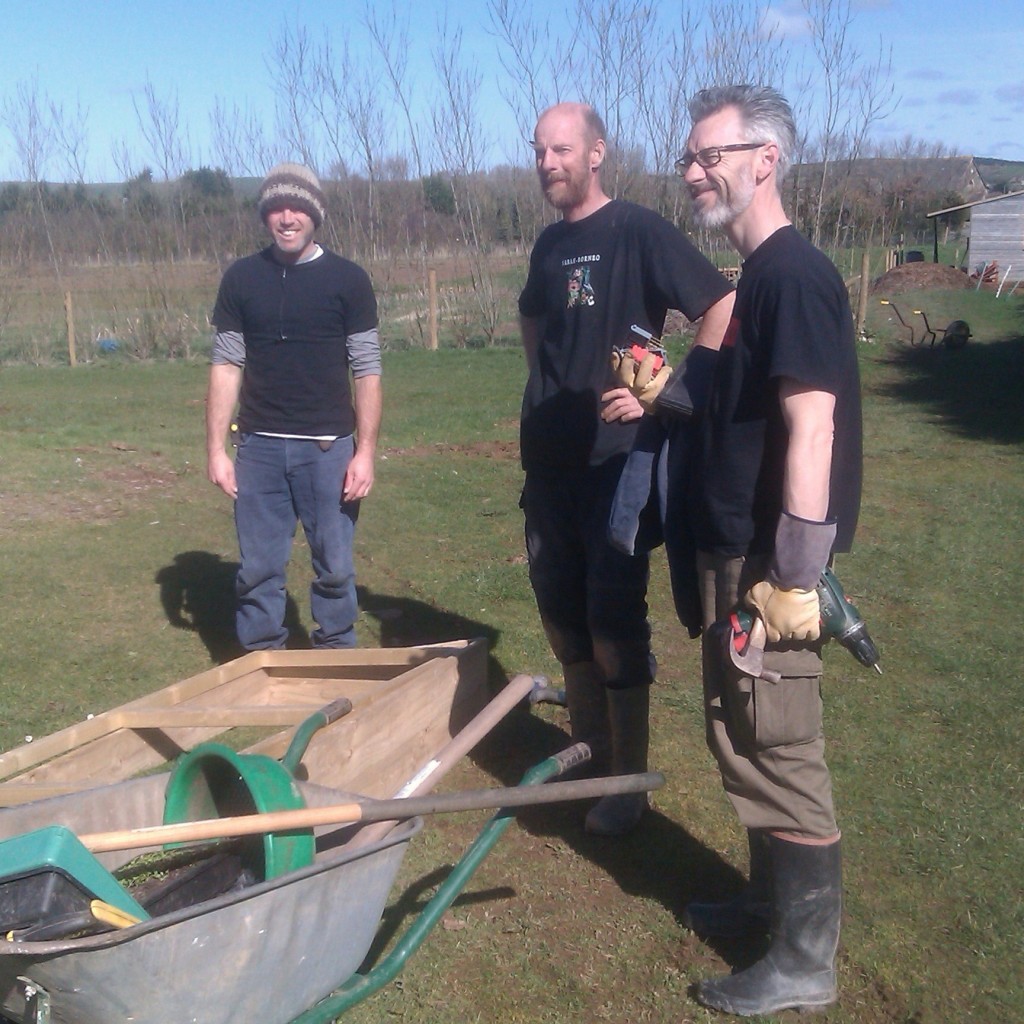
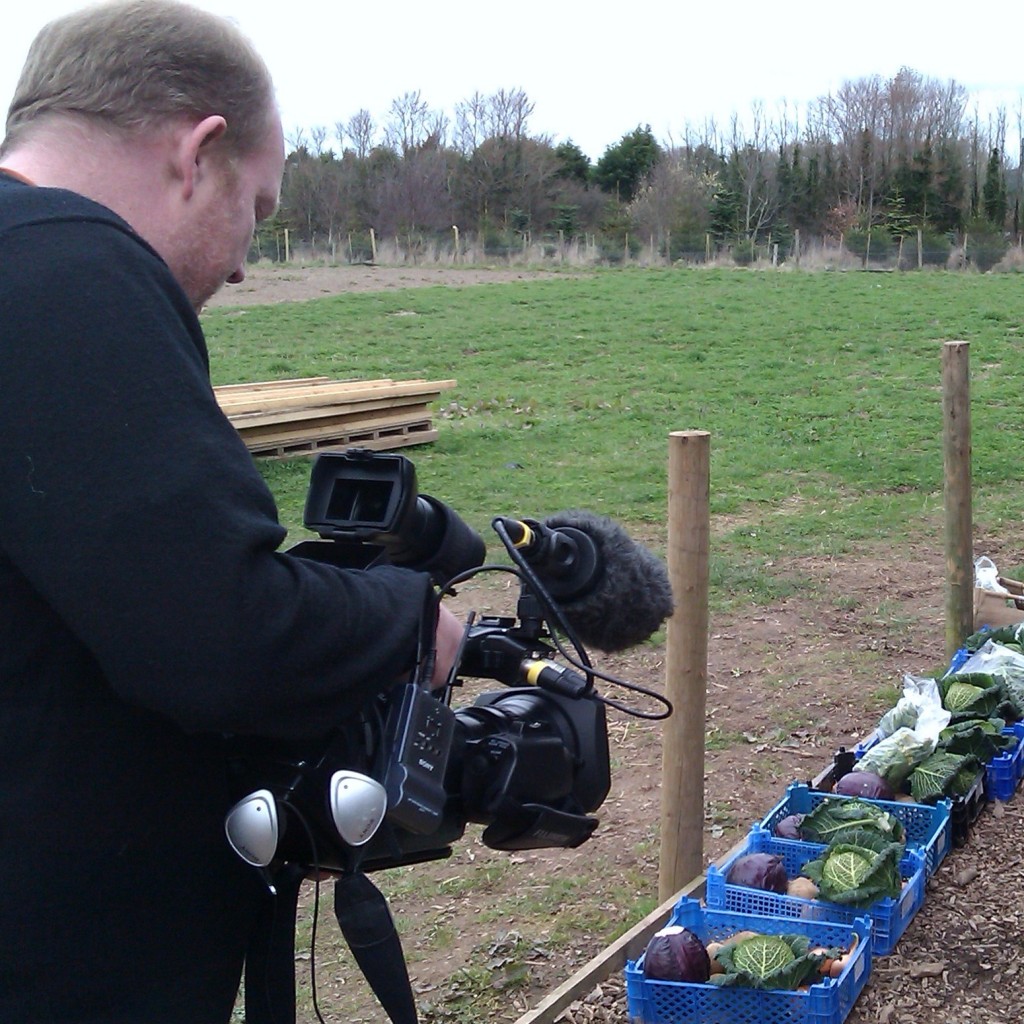
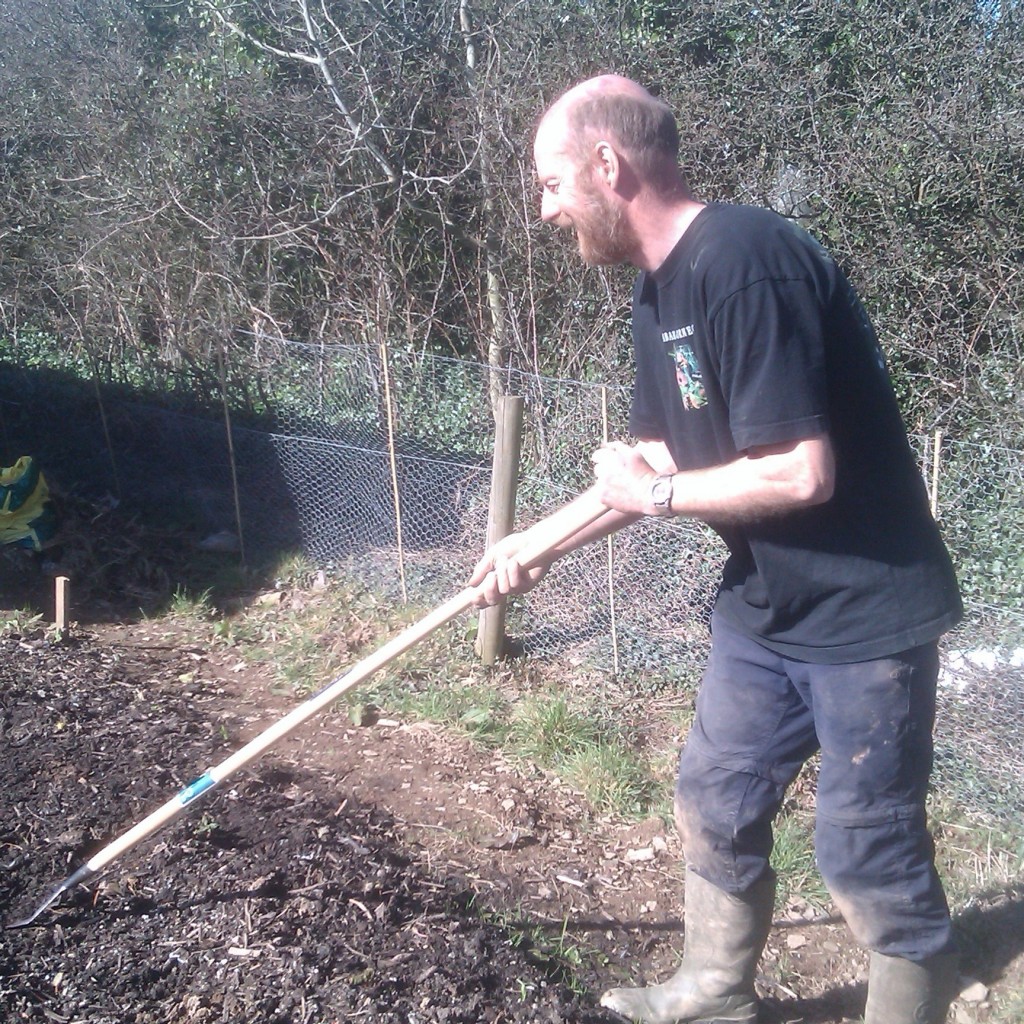

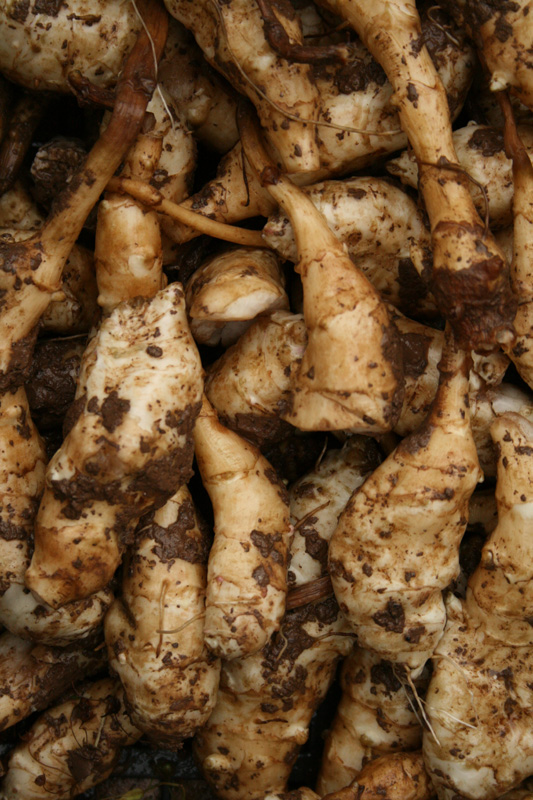
March 11, 2011
In another attempt to find another tasty use for those artichokes, this recipe from Hugh Fearnley-Whittingstall’s River Cottage Every Day might fit the bill – and you don’t even need to peel them. He says, ‘The earthy flavour of roasted artichokes is delicious with toasted hazelnuts. They have a tendency to collapse into fluffiness when roasted, but keeping the skin on stops them breaking up too much.’
Serves 4-6
Preparation and cooking: 50 minutes
Ingredients
75g hazelnuts
600g jerusalem artichokes
4 tbsp rapeseed or olive oil
2 sprigs of thyme
1-2 bay leaves
1 tsp hazelnut oil (optional)
½ lemon
a couple of handfuls of winter salad leaves (optional)
75g hard goat’s cheese, crumbled or shaved into strips with a vegetable peeler
salt and pepper
Method
First, toast the hazelnuts. Spread them out on a baking sheet in a single layer and place in an oven preheated to 180C/gas 4 for about 5 minutes, until lightly coloured and the skins blistered and cracked. Wrap in a clean tea towel for a minute and then rub vigorously with the towel until the skins fall off. Cool the chop very roughly or leave whole.
Turn up the oven to 190C/gas 5 and put a large roasting tin in to heat up. Scrub the artichokes well and cut into halves or quarters lengthways, depending on size – you need chunks about 1.5cm thick. Put them in a bowl and turn over in 3 tbsp of the oil with the thyme, bay and a little salt. Tip into the hot roasting tin and roast for about 35 minutes, until tender and lightly golden, turning them after about 15 minutes. Allow to cool slightly.
Whisk the remaining tbsp of oil with the hazelnut oil (if using), trickle it over the warm artichokes, squeeze on a good spritz of lemon juice and season with salt and a few grinds of black pepper. Turn them over gently with your hands to combine everything well. Add the hazelnuts and the salad leaves (if using), toss gently then divide between serving plates. Scatter over the crumbled or shaved goat’s cheese and serve.
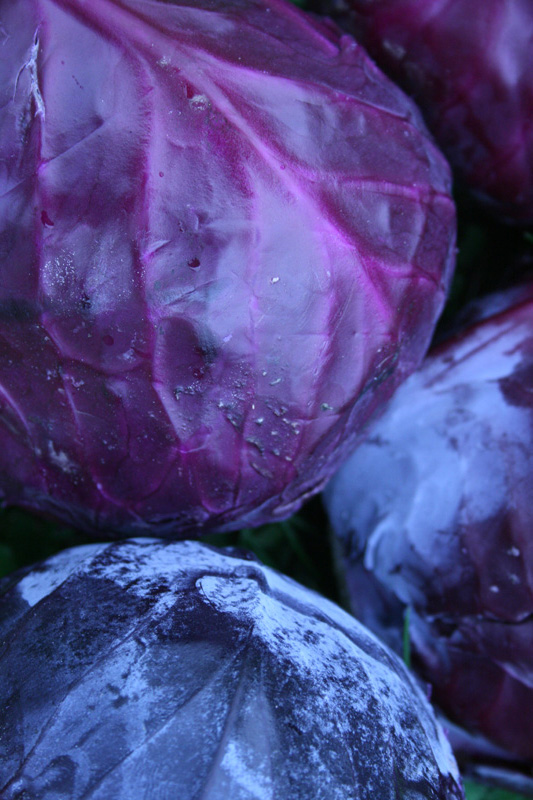
This week everyone will have:
onions (Restharrow Farm, Trebetherick)
potatoes (Benbole Farm, St Kew)
white sprouting broccoli (Restharrow Farm)
red cabbage (Restharrow Farm)
savoy cabbage (Growfair, Cornwall)
* jerusalem artichokes (Jeremy Brown, St Kew Harvest)
lettuce (Growfair)
Standard boxes will have extra potatoes and onions plus:
* leeks (Jeremy)
cauliflower (Growfair)
spring greens (Growfair)
* = grown to organic principles
Update: The boxes also contain a small bag of bean sprouts cultivated by Camel CSA expert grower Mark Norman in his linen cupboard! He did this as an experiment and is keen to grow some more. So please let us have your feedback. As there’s only a small amount, he suggests you try them sprinkled on top of salad or in a sandwich.

March 7, 2011
Camel CSA’s growing team has got the cover on the first of our three polytunnels. At long last we can start planting the early carrots, beetroot and salad crops.
A HUGE thank you to the volunteers who braved grey skies and a biting easterly wind to get the job done.
Expert growers Jane, Jeremy B and Mark N led team members Bob, Bridget, Cath, Charlotte, Danny and Mark M plus Finn (7), Keira (5) and Max (5).

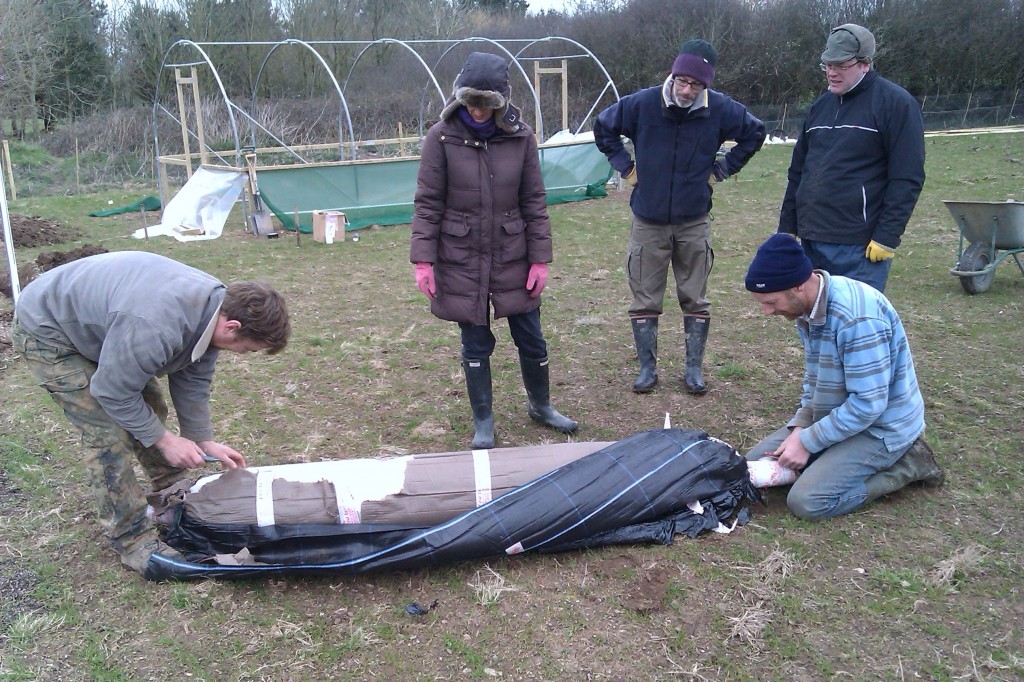



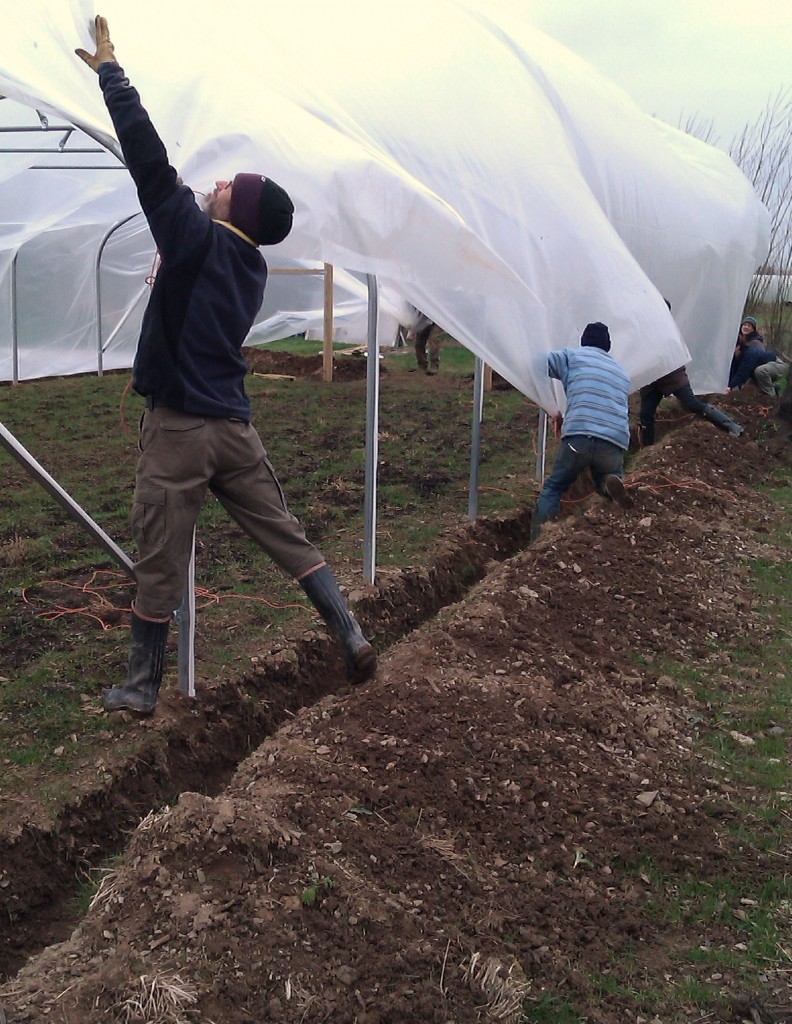
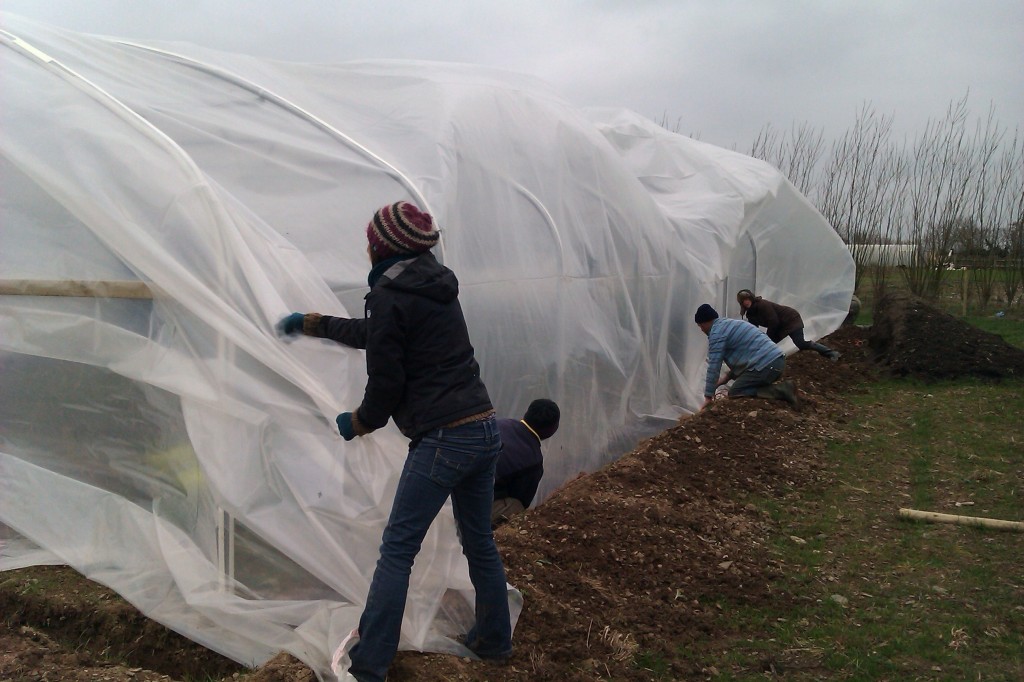
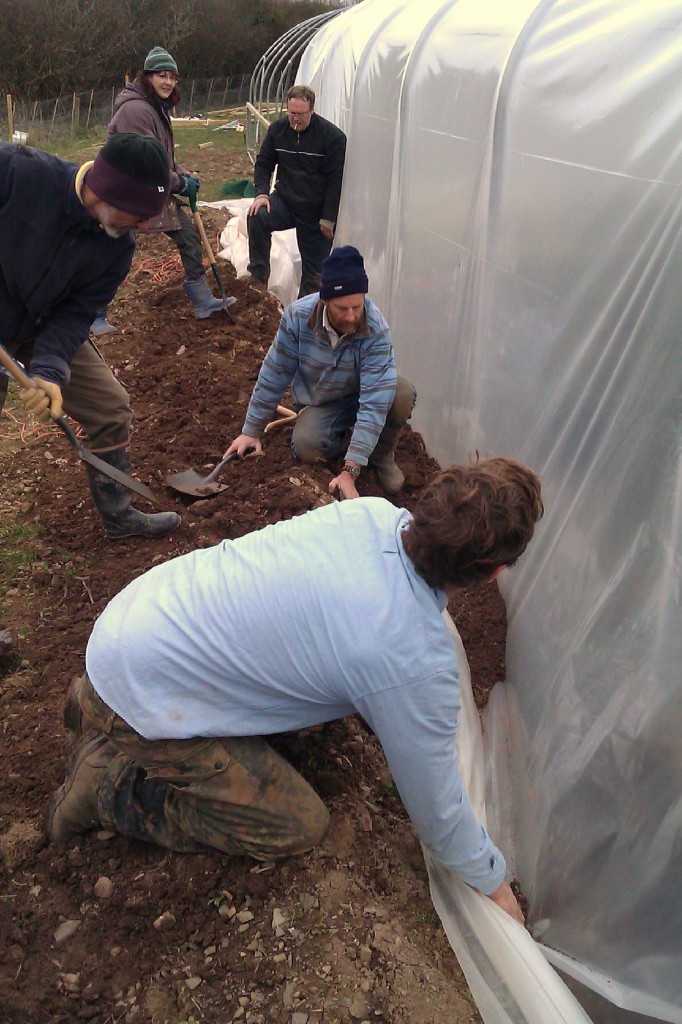


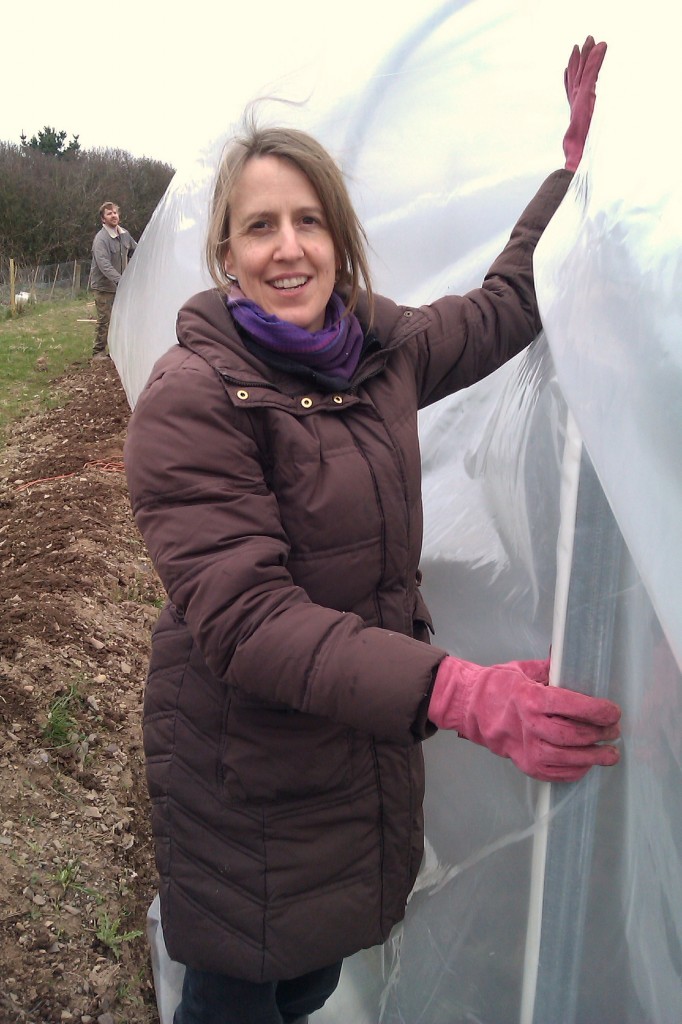
March 6, 2011
Jerusalem artichokes are a staple item in Camel Community Supported Agriculture’s weekly veg boxes at this time of year.
Unlike late winter brassicas, which are in short supply all over the UK, these knobbly roots seem to thrive in hard, frosty conditions. Our growing team are about to plant a new permanent bed of them to sustain us in future seasons.
Jerusalem artichokes are hardy perennials, related to sunflowers. They have attractive purple flowers and tall summer growth, so we’ll be using them as a windbreak (!) for our soft fruit area.
Camel CSA’s valiant volunteer picking and packing team dig up quantities of them and scrub them clean each week for the boxes – to accompanying groans from some of our members.
So what can you do with these often-neglected vegetables?

My perennial favourite is Jane Grigson’s Palestine Soup, though this is a bit of a misnomer. Veggies should leave the bacon out.
My family also like Nigel Slater’s casserole of artichokes and pork for deepest winter, which uses sausages. It sounds a bit odd but is a surprisingly good heartwarmer on a cold frosty evening.
The vegetarians among you could try Yotam Ottolenghi’s artichoke and goat’s cheese souffle or Hugh Fearnley-Whittingstall’s Roast Jerusalem artichoke, hazelnut and goat’s cheese salad.
So give Jerusalem artichokes a try. They’re flavoursome, versatile, easy to grow, should be local (if you’re living in the UK) and inexpensive. But be warned – a little goes a long way.
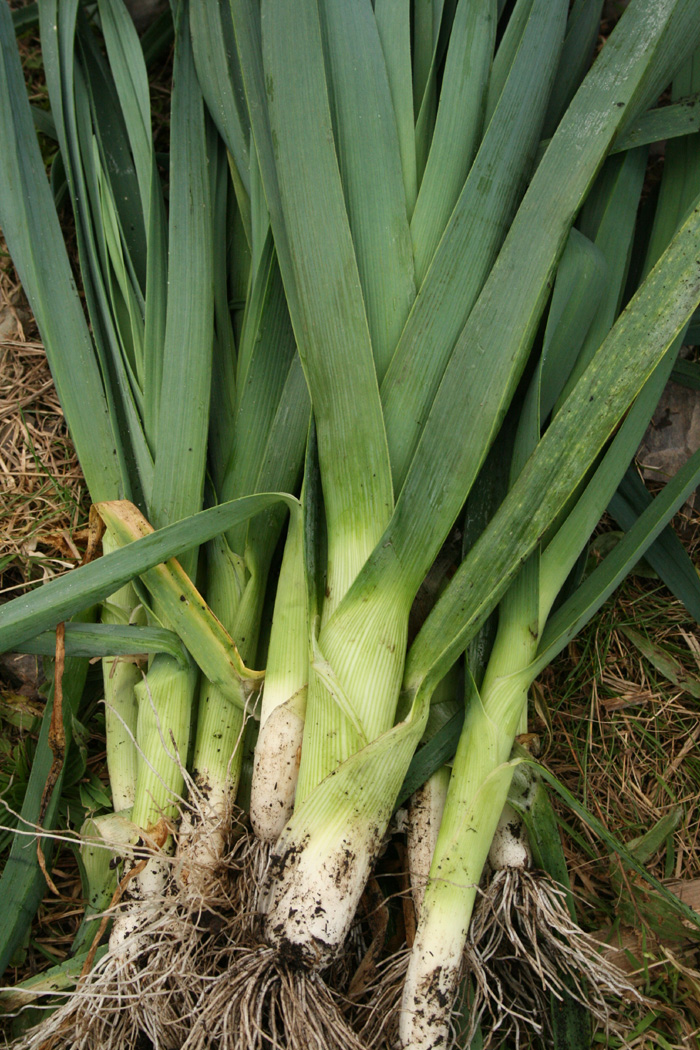
March 5, 2011
A recipe from Skye Gyngell’s How I Cook. It specifies small leeks but works just as well with larger ones although they’ll need to be cut up a bit smaller than she suggests! It can be prepared ahead and reheated just before serving.
Serves 6
Preparation and cooking: around 40 minutes
Ingredients
12 small leeks
50g unsalted butter
bunch of thyme
60g freshly grated parmesan
salt and pepper
1 tbsp chopped parsley
Method
First trim off the top of the leeks, leaving only a small amount of green, and trim the root end. Now slice the root lengthways into quarters, cutting almost but not quite through to the base. Rinse well under cold running water,shaking to loosen any dirt.
Lay the leeks in a medium, shallow pan and pour in just enough water to cover.Bring to the boil over a high heat, then lower the heat to a simmer and cook, uncovered, until the water has reduced by a third. Add the butter and thyme and continue to cook until almost all the water has evaporated, leaving glossy, sweet, soft leeks. Discard the thyme.
Scatter over the parmesan and season generously with pepper, adding a little salt only if needed. Sprinkle with the chopped parsley and serve.

March 4, 2011
All of this week’s boxes will have:
potatoes (Benbole Farm, St Kew)
onions (Restharrow Farm, Trebetherick)
white sprouting broccoli (Restharrow Farm)
purple kale (supplied by R.E. Dennis, Bodmin)
cauliflower (R.E. Dennis)
swede (Restharrow Farm)
Standard boxes will have extra potatoes and onions plus:
* leeks (Jeremy Brown, St Kew Harvest)
* jerusalem artichokes (Jeremy)
cabbage tundra (R.E. Dennis)
* = grown to organic principles

February 25, 2011
To celebrate the fact that the Cornish Pasty Association (CPA) has received Protected Geographical Indication (PGI) status for its world famous pasty, we thought you might like a traditional Cornish pasty recipe. The difficulty is finding the decisive recipe – there are as many variants as there are pebbles on the beach – but most people agree on the following:
- use a good cut of beef – skirt is the best, chuck is an alternative
- include swede (known as turnip in Cornwall), onion and potato but never carrot
- whether the ingredients are diced or sliced is debatable, but they must go in raw
- seasoning is restricted to salt and plenty of pepper
- the pastry is traditionally shortcrust, made with lard (though a Cornish friend always makes rough puff pastry for hers)
- add a knob of butter or a spoonful of cream for extra richness
The recipe that follows uses grated frozen lard – which adds to the preparation time. Use your normal shortcrust pastry if you prefer.
Serves 4
Preparation: 1 hour +
Cooking: 45-50 minutes
Ingredients
for the pastry:
350g block of lard
450g strong plain flour
pinch of salt
ice cold water to mix
for the filling:
400g beef (skirt or chuck), trimmed and diced
200g onion
200g swede
600g potatoes
salt and pepper
butter/cream
egg wash
Method
Put the lard in its wrapper in the freezer and leave for about an hour until hard. Sift flour and salt into a mixing bowl. Remove the lard from the freezer, peel back the paper, dip into the flour and grate it into the bowl, dipping back into the flour every now and again to make the grating easier. Mix the grated lard evenly into the flour by making sweeping scoops with a palette knife until it resembles heavy breadcrumbs. Stir in 1 tbsp of water at a time until the dough clings together, then form it into a ball. Place the dough in a plastic bag and chill in the fridge for 30 minutes.
Preheat the oven to 200C/gas 6. Keeping separate piles, peel and coarsely chop the onion and peel and dice the swede and potatoes. Roll out the pastry and cut out four circles about the size of a small dinner plate. Sprinkle onion and swede across the centre of the pasty in an oval shape, leaving a 2cm border. Season with salt and pepper. Cover with the meat and then half the potato. Season again and then add the remainder of the potato.
Moisen half the pastry border with a little water, bring up each side of the circle of pastry to enclose the filling, and press together to form a ridge. Crimp with your fingers (see note below).
Grease a flat baking sheet and sprinkle with water. Transfer the pasties to the sheet, prick them in a few places on either side of the seam with a fork and paint all over with egg wash. Bake for 15 minutes, then lower the temperature to 150C/gas 2 and cook for a further 30-40 minutes.
NOTE: How and where to crimp is another question. Some say the crimp should be on top, some on the side. My Cornish friend says she does the crimping on the side then turns the pasty over as she puts it on the baking sheet so that the crimp ends up on top. The CPA’s own recipe shows the crimp on the side.


